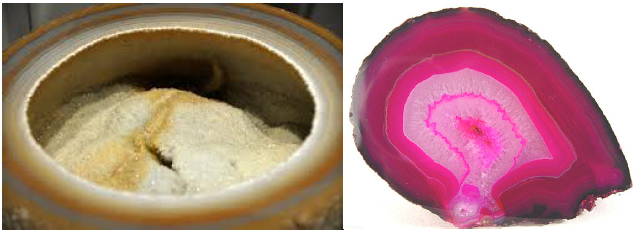Geodes are technically sedimentary rocks since they are the result of the action of water.
Geodes are formed when cavities in a host rock (which may be sedimentary or igneous) become lined with a durable mineral, often a variety of quartz.

The term geode usually refers to rounded nodules with hollow centers.
Some sources define a geode as a rounded nodule, which is harder than the host rock.
The geode cavity itself can have multiple origins.
For example, it may have resulted from the decay of buried organic matter or the consolidation of trapped gasses within a volcanic ashfall.
It may also result from the dissolution of a mineral such as calcite.
Groundwater containing dissolved minerals fills the void, and minerals crystallize along the edges of the cavity—rapid crystallization of quartz results in a lining of agate.
Later, slower crystallization will produce distinct crystals of minerals such as citrine, amethyst, calcite, gypsum, and barite.

The conditions of formation create distinctive shapes.
Some geodes are nearly perfect spheres, others are teardrops, or rounded tops with flattened bottoms…
Some are lens-shaped (convex tops and bottoms, often shallow), and many are somewhat irregular.
Some large geodes have multiple interconnected pockets.

Geodes provide a sheltered environment for the growth of beautiful crystals, and sometimes rare minerals found nowhere else.
Many of the world’s best crystal specimens have been found inside of geodes.
Some scarce minerals have been identified because the pristine environment allows a unique crystal to form, one that looks out of place and a different mineral from the bulk of those around it.
Geodes are prevalent in certain parts of the world, including the Midwest United States (uniquely Indiana, Kentucky, Illinois, Missouri, and Iowa), Utah, Brazil, India, and Mexico.
Geodes are popular at rock shows, as unopened geodes may be purchased and then cracked, broken, or cut open to reveal the interior to the buyer – who is usually the first human to glimpse the inside of their treasure.
